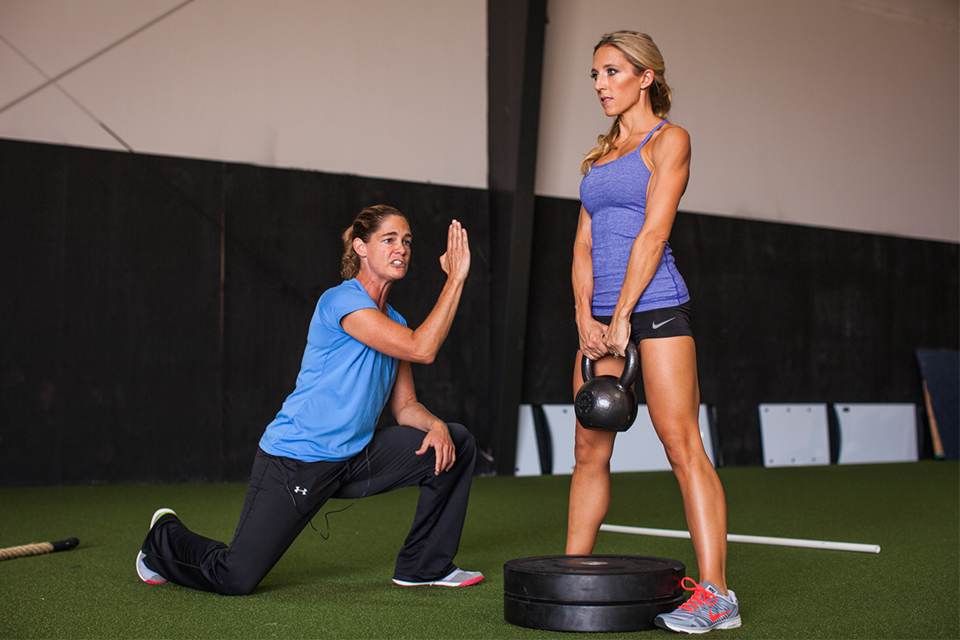Start Out Right with Good Kettlebell Form

This month, Diane Vives is at Total Athlete ATX with Kathy Sharp, who is demonstrating the movements. This series of exercises is designed to prepare and build up to performing a proper kettlebell swing. The swing is not actually being taught here; look for great technicians and coaches for hands-on instruction on that exercise. The kettlebell swing is a very technical movement, and it’s important to master this basic—the hip hinge—before building up and adding load. These movements will help you prepare for working with the kettlebell.

Hip Hinge
Why: to teach a neutral torso position, which should be mastered before adding load
What You Need: long pole
Starting Position:
Stand in a tall posture, feet planted on the floor.
Grasp a long pole in both hands and hold it behind the back; one hand is placed behind the head and the other at the small of the back (the top hand’s palm is on the side of the pole away from the head; the back of the bottom hand is touching the back).
The bottom end of the stick should align approximately behind the knees, and there is contact with tailbone, mid back, and back of head in a straight line.
Motion:
Reach back with the hips; the pole should remain in contact in the same places and remain straight.
The upper leg and torso should create a V, not an L, as the hips are pushed back.
That V is the hip hinge, which loads the posterior chain, the stronger muscles.
Return to standing position; repeat.
Hip Hinge into Dead Lift
Why: build on proper hip hinge form to increase strength
What You Need: Kettlebell, weight plates (number depends on your height)
Starting Position:
Place a kettlebell on top of weight plates to effectively raise the top of the handle to approximately knee height.
Stand in an upright position, neutral stance, with feet on either side of the weight plates.
Motion:
Push the hips back into hip hinge position and grasp the kettlebell handle.
Drive hips forward, pulling the kettlebell up with both hands, while pushing through the floor.
Focus on keeping weight between the legs and maintaining static control of the upper body.
Finish in a vertical plank position.
Return back down to release into same starting position.
 Battle Rope
Battle Rope
Why: challenge stability through the torso, teach proper movement for a dynamic swing, and provide feedback on form
What You Need: Single Battle Rope, partner or static anchor
Starting Position
(sending and receiving):
Grasp the rope in both hands while standing with feet hip-width apart.
Motion (sending a wave):
Move into full extension, working the hip hinge and sending the wave in quick up-and-down motions.
At full extension, the rope is above the head; in the hip hinge position, the rope is slammed against the ground.
Maintain hip hinge on every single one.
Motion (receiving a wave):
Hold the rope with both hands while stabilizing position throughout the motion.






